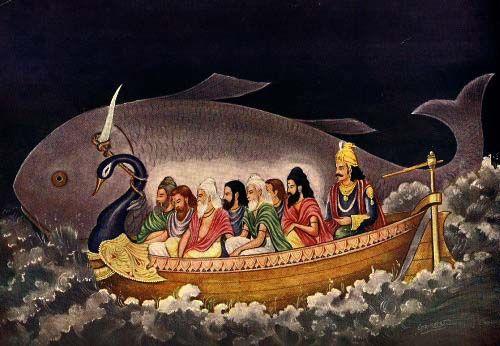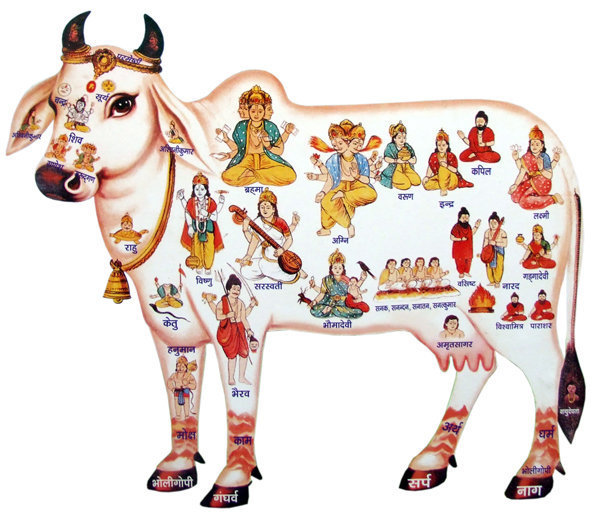Nakshatra padas: A Teaching of Rishi Pulastya Part 1
Case studies: Donald J. Trump & Hillary R. Clinton Part 2
by SueAnn McKean
as taught to me by AIAC guru, Souvik Dutta
Dec 21, 2015
This article will discuss a teaching that originated from the book Ravana Samhita.
This is a topic that seems relatively unexplored to my very limited knowledge on the subject. This is my attempt to open the door and offer a meager sample and believe much more research needs to be done.

This book was written by the same Ravana who antagonized Sri Ram when he kidnapped his wife Sita, setting off a series of events culminating in a war that destroyed him and his kingdom in the epic story the Ramayana. However, there is a refined side of Ravana, who revered knowledge and was a devotee of Siva that made him a great scholar and Jyotishi.
The topic in the Ravana Samhita that I wish to discuss in this article is the teaching of how to use the four nakshatra padas. It was taught to King Ravana by his grandfather, Sage Pulastya.
First a few words about Ravana’s grandfather and then we will see what the nakshatra padas do and look at the charts of the two opposing front runners in the 2016 presidential race, Donald Trump and Hillary Clinton.
Pulastya is the rishi that gave the knowledge of the nakshatra padas to the Jyotish world.
He was a mind-born son of Brahma (Brahma was was said to be his father)* and one of the seven great sages or Saptarishis in the first manvantara (Sanskrit for a time cycle).
Let’s get a sense of the Hindu ‘s concept of time periods. A manvantara is 306,720,000 years long and present day humanity is in the 7th manvantara. Obviously he lived a long time ago. But we need not take this too literally since the name “Pulastya” has become
a title that denotes a function or job; the name taken from the rishi of the first manvantara since ideas are what matter not actual people.
Rishi Pulastya’s job was to share knowledge; his greatest accomplishm ent was to produce some of the Puranas (Sanskrit sacred writings containing Hindu legends and folklore) to humanity, the most famous being the Vishnu Purana.
ent was to produce some of the Puranas (Sanskrit sacred writings containing Hindu legends and folklore) to humanity, the most famous being the Vishnu Purana.
The Vishnu Purana has the teachings of the fundamental concepts of Jyotish: Time cycles like the yugas, the creation story of the churning of the Milk Ocean (Samudra Manthan) as well as other myths and ancestry of the grahas and much more. First he received it from Brahma himself then passed it on to Rishi Parasara, considered the father of Vedic astrology, who wrote it down for the benefit of all.
*A Brahmarshi is a sage who has understood the meaning of Brahman, has attained the highest divine knowledge, Brahmajnana.
By studying the nakshatra that a graha inhabits we can understand the psychology and emotional themes in a person’s life represented by the graha in a rasi. Including the nakshatra will give greater specificity than looking at the rasi alone, and, gives more juicy details about the mental makeup and emotional issues.
A person with the Moon in Gemini rasi, for instance, could very likely be interested in communications, writing, teaching, interacting with others and be changeable. But within Gemini there are 3 distinct nakshatras with a completely different symbol, deity, patterns, animal, tridosa, gana etc. The person’s Geminian mind will have completely different karmas and experiences based on the nakshatra it is located in.
For example, the intense and stormy Ardra will have to struggle and work hard to overcome one obstacle after another before reaping any fruits while the Punarvasu can experience fabulous success and/or wealth, sometimes with initial failure — the classic rags to riches to rags again, seemingly fated with no effort at all. Whereas the Mrigashira native, restlessly questing for the golden deer, the perfect mate, the ultimate high always just beyond her grasp, has a very different agenda and outlook than her Gemini mates Ardra and Punarvasu.
The nakshatra pada of the Moon in Gemini, will give even greater specificity and more details. A rasi is a 30 degree span, the nakshatra a 13 degree and 20 minute span and the 4 pada (portion) has a span of 3 degrees, 20 minutes each. So with the 27 nakshatras divided into 4 parts that will give us 108 unique places that a graha can inhabit. With 9 grahas, that is a total of 972 combinations or results that can be gotten by using sage Pulastya’s pada system.
Before looking at the key grahas of our presidential candidates, here are some possible meanings of the 4 padas. We will see how the planetary placements in the nakshatra can reveal interesting variations by using the padas according to Pulastya’s teachings.
Chatur-purusarthas
The four padas are represented by the four legs of the Dharma Bull and shows four directions (chaturayana). We can think of this as the four aims, goals or motivations.
They are in the following order:

Dharma
Artha
Kama
Moksha
Every Nakshatra will be composed on these four parts — chatur-purusarthas (the 4 goals).
Use the scroll bar at bottom of this page to see Moksha pada column
Dharma |
Artha |
Kama |
Moksha |
|
Focused on duty – What is right, true to values, ethics, law – natural flow – What I must do -create – appropriate role – religion, philosophy – judgmental, righteous – stubborn – protective, corrective – what I have to do Agni-1,5,9 |
Focused on wealth – food, sustenance, gains – income, resources – support of family – security – material attachments – service, career, karma – what you treasure – what you value – learning – taking in – acquisition – accumulation Prithvi- 2,6,10 |
Focus on enjoyment – pleasure, entertainment – experience – emotional attachments – if afflicted – clinging, excess, intense – interaction, social – relationships – support of family, friends – fulfillment of desires – what I like to do Vayu-3,7,11 bhavas |
Focus on letting go – release, forgiveness – give up, detach – sacrifice, renunciation – freedom, liberation – giving out – sharing – giving, charity – change, evolving Jala-4,8,12 bhavas |
Nakshatras manifest on the psychic level. Each graha will be influenced by them and their padas. The pada carries the energy of the tattva associated with them.
For example, grahas in pada one are fiery and can have a righteous and/or protective attitude. The earthy second pada shows a patient, persistent attitude, so they can fulfill big desires for long lasting goals. The grahas in the third, kama pada can have a huge appetite for pleasure and a hunger for more and different experiences, and especially for interactions with others. The fourth and last pada can show a more accepting, resigned, live and let live attitude, that goes with the more detached temperament of the moksha pada.
It’s important to understand the deity that rules the nakshatra. It will have the most say, more than the ruling graha, on the psychological themes, attitudes and mental outlook. Next, its behavior based on one of the padas will manifest through the nakshatra on the psychological level, which will act though the graha placed in a rasi and a bhava.
We use the pada to understand the energy, motivation, behavior, direction and goal of the deity of the nakshatra.
For instance Pushya nakshatra’s deity is Brihaspati, the priest and preceptor of the devas. Brihaspati’s nature is to spread knowledge, particularly spiritual knowledge as well as teaching knowledge that results in something useful to society and the betterment of mankind; as for example knowledge that pertains to law, ethics or morals and leads to wisdom and spiritual development.
If the Moon is in pada one of Pushya, then it could impel the mind of the native to be a teacher, preacher, minister, inventor or a  judge. If it were in pada two, the native’s mind would want to acquire knowledge, possibly in the form of books and manage a rare collection of books, or have a huge library, or own a book store, or maybe be involved with a grade school or an institution of higher learning.
judge. If it were in pada two, the native’s mind would want to acquire knowledge, possibly in the form of books and manage a rare collection of books, or have a huge library, or own a book store, or maybe be involved with a grade school or an institution of higher learning.
If Brihaspati is affected by the kama of pada three, they may want to join groups, acquire and enjoy sharing knowledge, or be knowledgeable in order to belong to a group; be part of a group of like minded seekers of truth, an occult secret society, a sangha, mensa, or even say a fellowship of history buffs. And lastly, if the Moon was in the moksha pada four, the emphasis of Brihaspati is not in having knowledge for a purpose such as gain, feeling a sense of belonging or security; but for the purpose of evolving, liberation, letting go of egoic habits and loosening the grip of personal identity.
First and foremost we look at the nakshatra pada of the deity from the tripod of life. Moon is the most important since it shows how people feel, think and behave. The Moon is our mind, conditioned by birthplace (patra), family, surroundings and culture. The mind has the most impact on how the world is perceived. Sun, the soul called atman, is important too. The soul is the indicator of pending karma showing our challenges that must be experienced in the present lifetime. The 3rd leg of the tripod is the the lagna, our intellect and shows the framework of our perceptions, like a preset configuration of how our brain works innately, irrespective of social conditioning.
Let us explore the tripod grahas in their nakshatra and pada of the two leading presidential candidates (as of Dec. 2015) for the 2016 race, Donald Trump and Hillary Clinton.
Update: Uploaded on Word press Jan 29, 2016 3 days before the Iowa caucuses. Trump and Clinton are still in the lead. Anything could happen so I wanted to post this before the possibility that new front runners over take them. Continue next to the analysis of their charts in Part 2

Very good post